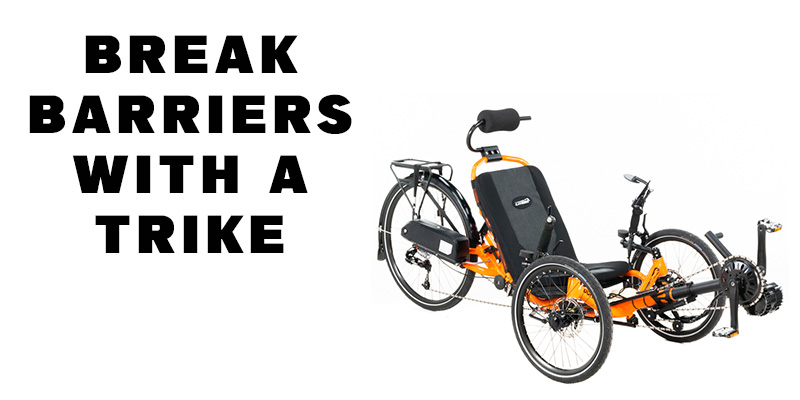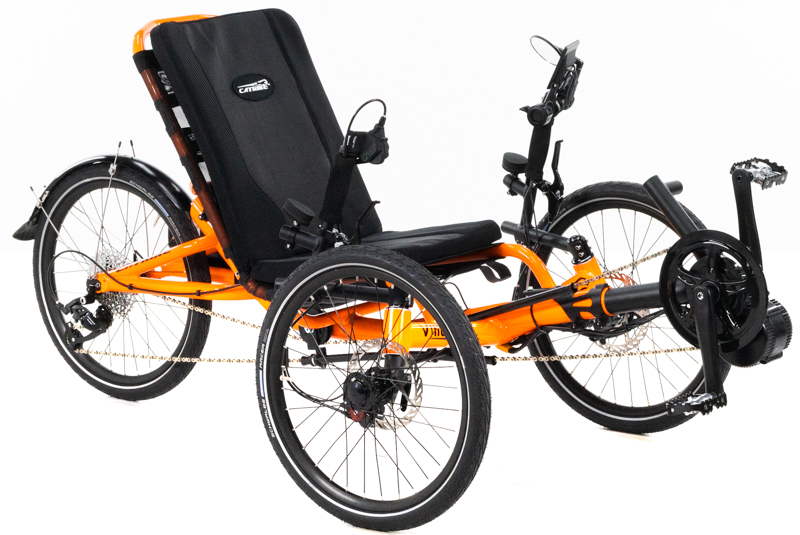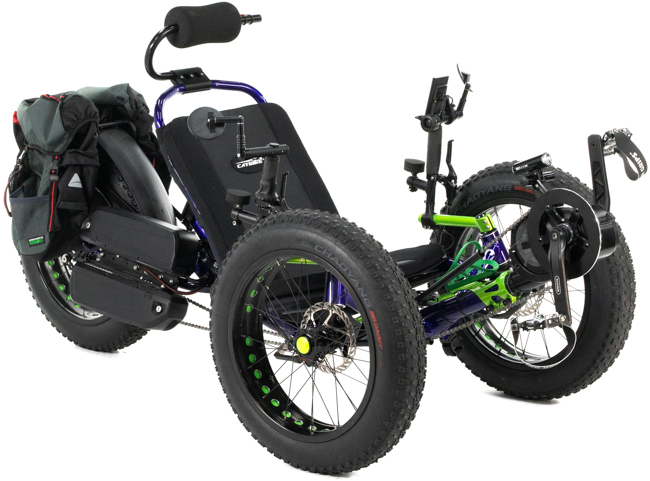

Breaking Barriers: How Recumbent Trikes are Making Cycling Accessible
Published on 07/18/2024
Recumbent trikes offer several features and benefits that make cycling accessible to a broader range of people, including those with physical limitations, balance issues, and other challenges. Here’s an in-depth look at how recumbent trikes contribute to greater accessibility in cycling:
Stability
Unlike traditional bicycles, trikes have three wheels. This makes it so that trikes have superior stability than what you would have on a standard bike. This eliminates the need to balance, making it easier for individuals who struggle with balance issues.
he low seating position of a recumbent trike lowers the center of gravity, enhancing stability and reducing the risk of tipping over.

Comfortable Seating
Recumbent trikes typically feature large, ergonomic seats with backrests that support the spine and reduce pressure on the lower back, buttocks, and wrists. This is beneficial for riders with back pain or discomfort from traditional bike seats.
The reclined position spreads the rider's weight over a larger area, reducing strain on the neck, shoulders, and arms.
Reduced Physical Strain
The seated, reclined position of a recumbent trike places less stress on the knees, hips, and ankles, making it a suitable option for individuals with arthritis or other joint issues.
The horizontal pedaling motion is often easier on the legs and knees compared to the vertical pedaling motion of upright bikes.
Accessibility for Diverse Needs
Recumbent trikes can be adapted with various modifications to accommodate riders with disabilities, such as hand cycles for those who cannot use their legs, or foot supports and straps for riders with limited leg control.
Many recumbent trikes offer adjustable seats, handlebars, and pedals to accommodate different body sizes and shapes, ensuring a comfortable and secure fit for each rider.
Safety Features
The lower position of recumbent trikes can be offset by adding flags, lights, and reflectors to enhance visibility to motorists, making them safer for road use.
The stable design allows riders to stop and start without the risk of tipping over, which is particularly important for those with mobility issues or slower reaction times.

Low Impact Exercise
Recumbent trikes provide a low-impact cardiovascular workout that is gentle on the body while still promoting fitness and health. This makes them ideal for older adults, people recovering from injuries, and those with chronic pain conditions.
The comfort and ease of use encourage consistent exercise, which is beneficial for maintaining physical health and well-being.
Psychological Benefits
The stability and comfort of recumbent trikes can help build confidence in riders who may feel intimidated by traditional bicycles, encouraging them to engage in cycling more frequently.
Recumbent trikes enable people with physical limitations to participate in group rides and social cycling activities, promoting social inclusion and mental well-being.
Versatility
Recumbent trikes are available in various designs, including models suited for road cycling, off-road trails, and touring, making them versatile for different riding environments and preferences.
Many recumbent trikes can be equipped with electric assist systems, providing additional support for riders who may need help with pedaling over long distances or hilly terrain.
Recumbent trikes make cycling accessible by addressing a variety of physical, psychological, and practical barriers. Their stable design, comfortable seating, and adaptability to individual needs make them an excellent choice for people of all ages and abilities. Whether for recreation, exercise, or transportation, recumbent trikes open up the joys and benefits of cycling to a wider audience, promoting inclusivity and active lifestyles.




